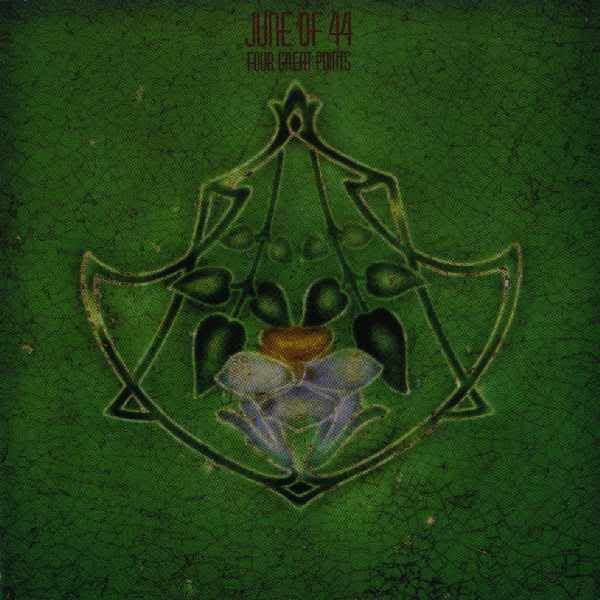Sunday, May 24th 2009
North Street Church, Halifax
Obey Convention
- Chris D’Eon
- Bloodhouse
- Husband & Knife
- Dog Day
Chris D’Eon opened up the show with a mix of ethereal electronic tones and eastern instrumentalism. It was certainly something most of the audience, seated with the performer in a semi-circle on the floor at the front of the stage, had never heard before. D’Eon performed vocals over delayed and looping percussion, tabla arrangements, and vocal snippets, before switching to a traditional Indian string instrument, the name of which eludes me. Electric piano and acoustic guitar rounded out the accompaniment. Overall the minimalist approach worked well in the dimly lit church, all though the exotic sound and tonality of the instruments may have brought more to the performance than if it had been played on traditional western equipment.
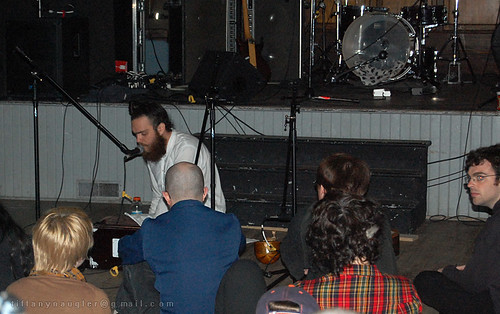
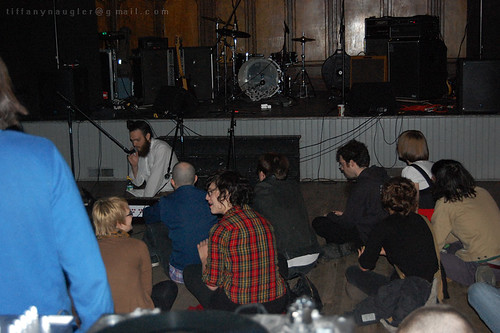
Bloodhouse took the (more traditional) stage next, and took the evening in a completely new direction. The brainchild of Alex Mitchell and Gabriel Wallot-Beale, backed up by seasoned Halifax musicians Will Erving (Be Bad) and Noel MacDonald (Tomcat Combat, A History Of), Bloodhouse pounded the stage with thick and heavy psychedelic rock. Two guitars mixed between catchy melodies, buried in fuzz, and straight power chord rock, while the bass and drums provide the key psychedelic element, heavy repetition and a proper groove (propelled along by Erving, who has no trouble moving from a spastic, noise jazz breakout to a straight 4/4 beat).
I spoke with guitarist/vocalist Alex Mitchell after their set, who told me that “unlimited time” was the key to Bloodhouse’s catchy, noisy jams. With just two members, without time constraints, in an empty hall far outside the city, the freedom to jam for hours proved key to distilling the perfect mix of noise and heavy pop. At first the lineup of the show seemed a little random to me, but Bloodhouse proved they could hold their own against fellow heavy pop hitters Dog Day.



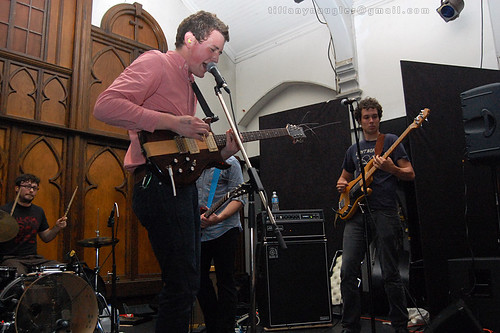

Before the main attraction, the atmosphere dimmed a little again with Husband & Knife, the solo project of KC Spidle (Dog Day, The Hold). Playing acoustic guitar, bass, and percussion, and backed up by Evan Cardwell on drums, guitar, and keyboard noise, songs ranged from almost-upbeat folk, to dark punk and noise interludes. It was a bit of a downer after the high energy of Bloodhouse, but the songs were well crafted and truthful, all though it was difficult to make out the vocals at times.
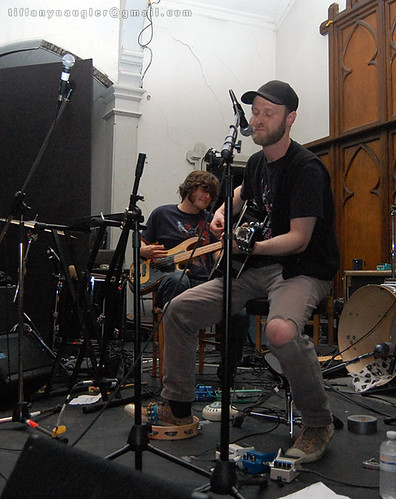

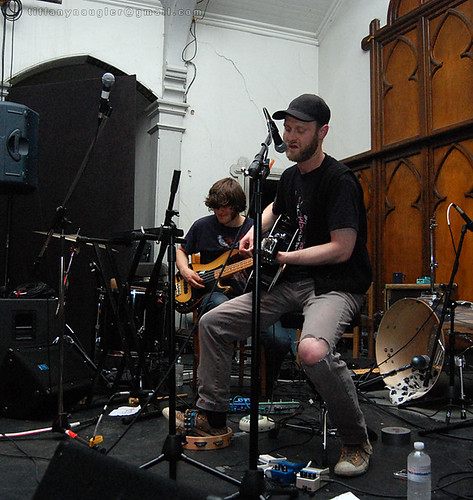
While all the opening bands kept the crowd pleased, Halifax’s own Dog Day were the star attraction, along with their newest album, Concentration, which they released a few weeks ago. Dog Day has gradually made the transition since their break out debut LP, Thank You, from syrupy east Coast indie, to a dark, complex, catchy monster of a pop band. Like Halifax’s last indie pop darlings, Wintersleep, but without all the dude bros and cheesy acoustic guitar, Dog Day rock impressively hard while barely breaking a sweat.
Front by dual vocalists Seth Smith and Nancy Urich, few bands manage to achieve such well rounded and catchy instrumentation while simultaneously delivering almost-impeccable vocals. All the “great bands” of our parent’s record collections knew the perfect mix of heavy rock and vocal prowess was the key to success, and Dog Day perform both admirably. Drawing as much on East Coast pysch rock pioneers Eric’s Trip as classic dark pop like The Cure, and even their own previous band, the Burdocks, Dog Day have clearly gelled as a band after many tours and two full length albums.
In perhaps a nod to the noisy backdrop of the Obey Festival, the closing song of the set found Smith and Urich locked together in an epic struggle of guitar necks, keyboardist Crystal Thili content to watch while Spidle hammered away at his slightly skewed drumset. Cheers and claps from the crowd quickly brought the band back out for a short and sweet encore. Having all ready delved into their back catalogue at the close of the set, Smith expressed support for the encore with the caveat that it was “not [their] song.” As the crowd spilled out in the warm night, there was no doubt that one of Halifax’s best bands still had plenty to give, and could always expect big support from the home crowd.
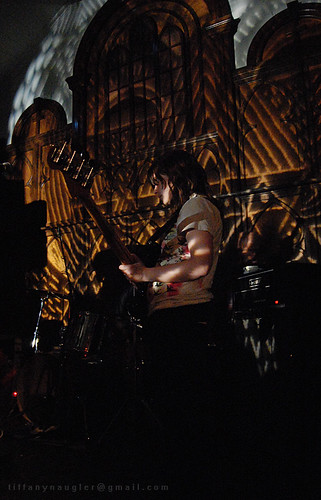




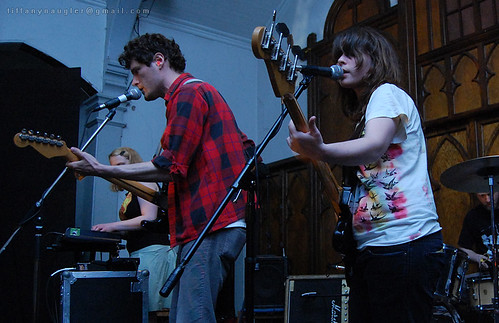


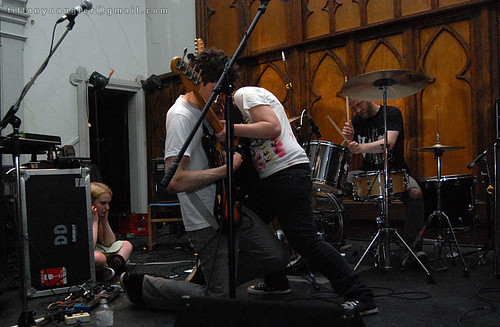 __________________________
__________________________All photos by Tiffany Naugler (website)
Review Written by Dan Nightingale

